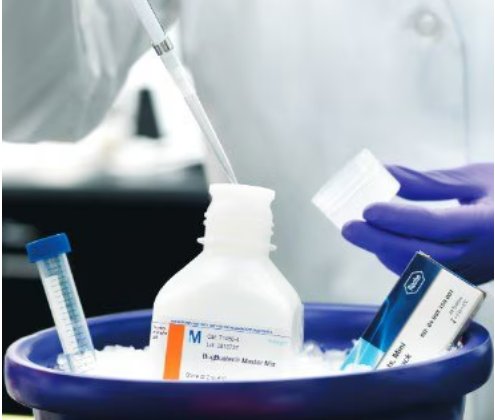 首页>
生物试剂
首页>
生物试剂
商家描述
售后服务
商家资质信息
产品评价(0)
Histone H3.3 (UniProt: P84243; also known as Histone H3, H3.3) is encoded by the H3-3A (also known as H3.3A, H3F3, H3F3A) gene (Gene ID: 3020; 3021) in human. Histones are basic nuclear proteins that are responsible for the nucleosome structure of chromatin in eukaryotes. Two molecules of each of the four core histones (H2A, H2B, H3, and H4) form an octamer, around which DNA is wrapped in repeating units, called nucleosomes, which limits DNA accessibility to the cellular machineries, which require DNA as a template. Histone H3 has two main variants, H3.1 and H3.3, which show different genomic localization patterns in animals. Histone H3.1 serves as the canonical histone, which is incorporated during DNA replication. Histone H3.3 is a highly conserved variant form of Histone H3, which replaces conventional H3 in a wide range of nucleosomes in active genes. It constitutes the predominant form of histone H3 in non-dividing cells and is incorporated into chromatin independently of DNA synthesis. It is associated with actively expressed genes in both animals and plants. It is predominantly enriched near transcription end sites (TES) of genes and positively associated with transcription. Protein arginine methyltransferase 6 (PRMT6) is known to catalyze asymmetric dimethylation of histone H3 at arginine 2 (H3R2me2a) and this asymmetric demethylation is reported to associate with silent genes. H3R2me2a contributes to gene repression by blocking the catalytic activity of the H3K4 methyltransferase KMT2A and counteracting the formation of H3K4 trimethylation. Transcriptional repression by PRMT6 and H3R2me2a is reported to be relevant for pluripotency and differentiation processes. It is also required for the maintenance of fully differentiated cells in various tissues. PRMT6-dependent H3R2me2a is also detected at active genes, both at promoter and enhancer sites. It contributes to gene repression at promoter and gene activation at enhancer sites. Loss of H3R2me2a from promoter sites is reported to result in enhanced KMT2A binding and H3K4me3 deposition along with increased target gene transcription. At enhancers, H3R2me2a peaks colocalize with the active enhancer marks H3K4me1 and H3K27ac. (Ref.: Bouchard, C., et al. (2018). Cell Reports 24(12); 3339-3352; Chow, C-M., et al. (2005). EMBO Rep. 6(4); 354-360; Tagami, H., et al. (2004). Cell. 116(1); 51-61).,官网链接:https://www.sigmaaldrich.cn/product/mm/mabe2046
默克
科研、开发、生产。
作为生命科学行业的全球领先供应商,我们致力于为科研、生物技术开发和生产,以及制药药物疗法开发和生产提供各类解决方案和服务。
 会员登录
会员登录.getTime()%>)
 购物车()
购物车()

 成功收藏产品
成功收藏产品
